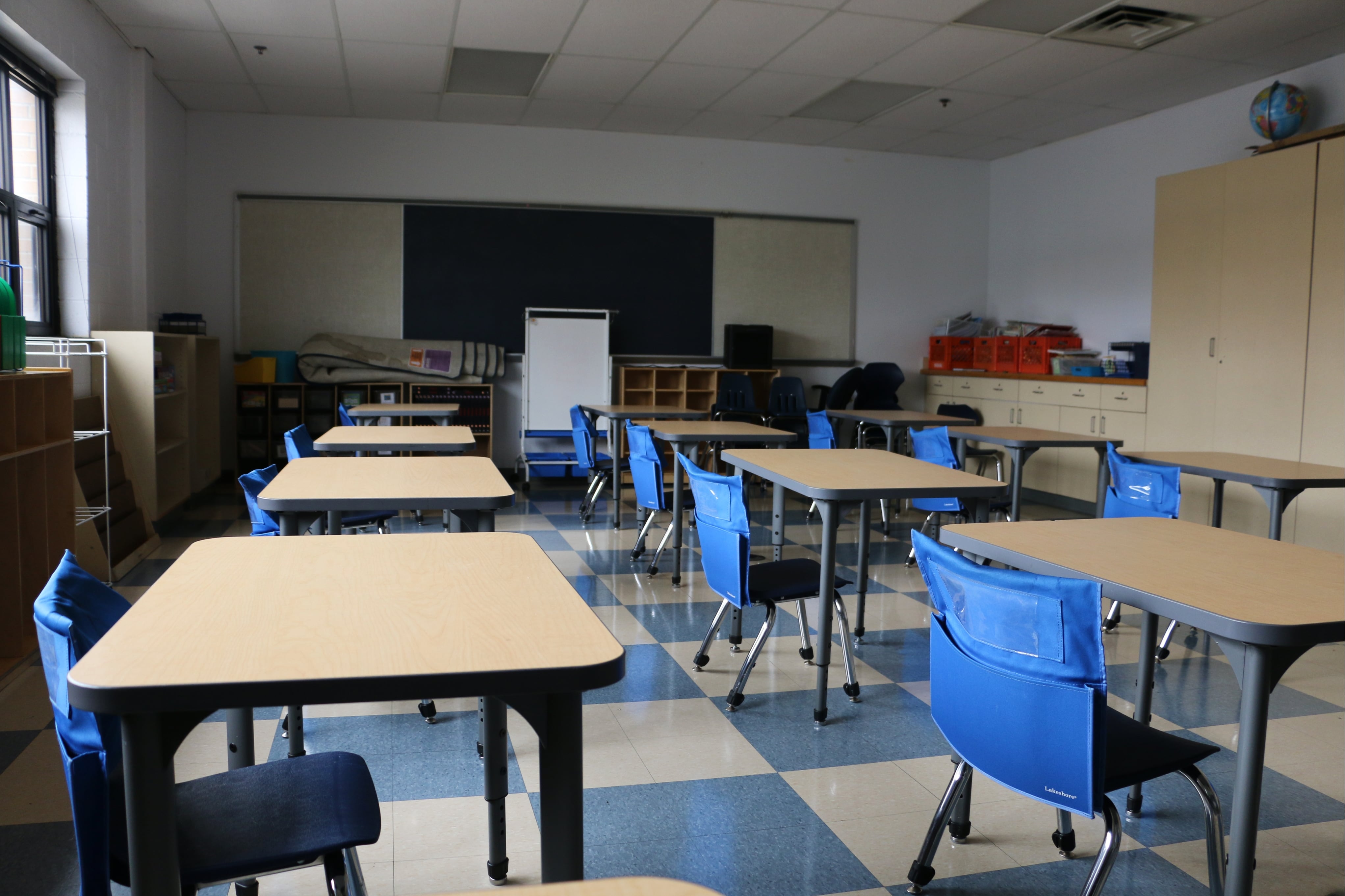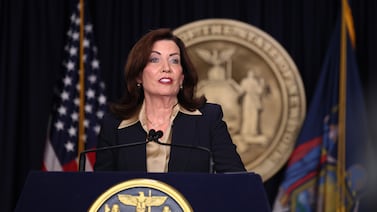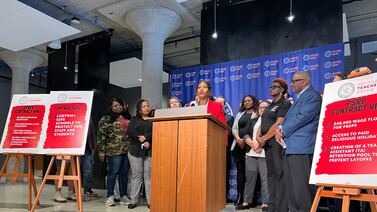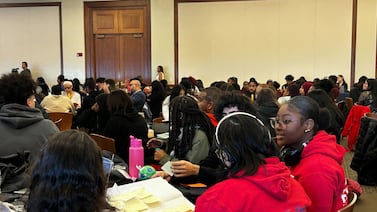This is the first in a two-part series looking at the emotional disturbance classification. Read Part Two here.
K.A. was shocked when she first saw the words “emotional disturbance” applied to her son on an official school document last year.
She felt she had no choice but to accept the designation. It was the only way her son, who developed a speech impairment at a young age and was diagnosed with post traumatic stress disorder, or PTSD, and depression as an adolescent, would be eligible to receive the support he needed in school, she said.
“My son was not emotionally disturbed,” K.A. said, adding that she found the term offensive. “He was someone with a lot of potential who went through traumatic experiences in school settings.” (K.A. asked to be referenced by her initials because she shared sensitive information and is employed by the city.)
A push is now underway to change the “emotionally disturbed” label, which currently is used to describe about 10,000 New York City students, including K.A.’s 15-year-old son. Advocates have long criticized the label. They say it stigmatizes children with certain behavior differences and is disproportionately applied to children of color. It also tends to be one of the trickiest of the 13 disability categories defined under the federal Individuals with Disabilities Education Act and used by schools to detail what support such children need.
New York state education officials had said nearly two years ago they planned to pursue a possible change to the ED nomenclature. The department’s Office of Special Education is expected to submit recommended names to the Board of Regents by early 2022, said Lori Podvesker, a New York City-based advocate who serves on the commissioner’s advisory council for special education services.
“Language has power, and language shapes our views and beliefs about people,” said Podvesker, a policy expert at INCLUDEnyc, a group that advocates for people with disabilities. “We do think the name change will start the process of moving culturally, which in a system as big as this one, is sometimes as powerful as changes in policy and procedures.”
What’s in a name?
Advocates say the problem with the word ‘disturbance’ is how it is applied: The term is disproportionately attached to Black students. According to the most recent publicly available data for NYC, during the 2018-19 school year, Black students accounted for 49% of students with ED even though they made up less than a quarter of the public school population.
This pattern plays out across the country, too. In 2006, while Black students comprised 15% of the student population, they represented nearly 29% of those identified as ED.
“The numbers are mind boggling,” said Dorothy Siegel, a longtime special education advocate in New York City. Siegel added that labeling marginalized students with a stigmatizing term further entrenches existing patterns of racism and oppression.
“Black boys are seen as bad so they wind up in that classification,” she said. “There is real trauma inflicted on children by racism.”
States vary in their use of the term emotional disturbance. While 27 states have kept the term from the federal law, 12 others instead use “emotional disability” or “serious emotional disability” to describe students who have problems regulating their emotions. Other states use terms such as “emotional impairment” or “behavior disorder” to describe similar barriers to learning.
“Emotional impairment” and “emotional disorder” have been floated in state-level conversations, said Podvesker, who did not know what specific names will ultimately be recommended.
Both of these names are improvements from “disturbance,” she said, in part because they mirror language already applied to other accepted disabilities. Other classifications for the city’s roughly 200,000 students with individualized education programs, or IEPs, include autism, learning disability, hearing impairment and intellectual disability.
“If we were to use the word ‘impairment,’ which is parallel to another classification called ‘other health impairment,’ that might help reduce the stigma,” said Podvesker. “Really, anything is better than ‘disturbance.’”
New York state education department officials did not return a request for comment on the status of the state’s name change efforts. The city’s education department is in support of a name change, said a department spokesperson, and has encouraged the state to engage people in selecting a new name.
Beyond the name: Emotional disturbance and police interactions
Advocates regard a name change as a first step in addressing their concerns with the ED classification. Even once the name is changed, problems could remain in how such students are treated.
While not required, students classified with emotional disturbance often have a psychiatric diagnosis for PTSD, depression, anxiety or schizophrenia. And when students face mental health crises in schools, school administrators will often call 911, resulting in a police intervention.
A recent report from Advocates for Children of New York found an upward trend of “child in crisis” incidents, a New York Police Department label for instances in which a student in emotional distress is removed from class and then transported to a hospital for a psychological evaluation.
K.A. recalls receiving a call from her son’s school saying staff had called 911 when her son, who is mixed race, had an emotional outburst. Police responded to the call, and her son was ultimately taken to the hospital for an evaluation.
“They felt like he was out of control and called 911,” she said. “Instead of the school getting the services he needed, they called the police.”
Such calls are made, advocates say, because schools and teachers lack the resources and information they need to appropriately serve students who have experienced trauma.
“We need to understand why [the student] is doing disagreeable things,” said Siegel. “What is it about the environment that is not supportive of whatever it is they need? In the end, the child is in the classroom full time so you have to create the mechanisms that work for this kid so he can function full time without having to be removed.”
Placement for students labeled ED
According to recent data, students labeled ED are disproportionately assigned to District 75 schools, which serve students who need more support than neighborhood schools can typically provide. Roughly 37% of students with an ED classification were placed in District 75 compared to about 12% of students with disabilities placed in that district overall, according to data from the 2016-17 school year, which is the most recent available. The data was obtained through a FOIA request by nonprofit Advocates for Children. Education department officials declined to provide updated figures.
Advocates say these placements can be problematic because District 75 may stymie students who perform well academically.
“If you have a kid who is labeled ED who is cognitively average or above average and then ends up in District 75, the chances of them graduating with a Regents diploma and moving on to something meaningful after school have just been reduced significantly,” said Maggie Moroff, a special education policy expert with Advocates for Children. “District 75 isn’t inherently evil. But to be there when it’s an inappropriate setting for the needs of a student is a real disservice.”
Evaluators might not be sufficiently trained in trauma-informed practices and therefore fail to understand the specific needs of students with behavioral problems.
“Behavior is so often a symptom of so many other things, including hunger or lack of sleep, emotional trauma, pandemic trauma,” said Moroff. “The [ED] classification is not going to get to the root cause of any of those.”
K.A.’s son eventually left the public school system altogether. For a time, he attended Success Academy — the city’s largest charter network — but left after struggling with repeated suspensions and disciplinary action, his mom said.
In middle school, his IEP team recommended he attend a District 75 school, but after visiting, his mom saw children with physical handicaps or intellectual disabilities and wondered if they would need more of the teachers’ attention. With the help of a special education advocate, her son eventually landed at Andrus, designated for students who cannot be appropriately educated in their home school district. He has since switched to Clark Academy where he is performing well. Both of these Westchester-based private schools for students with disabilities receive state funding to cover tuition.
It was a long road to find the right placement.
“If I didn’t have an advocate, I wouldn’t have gotten as far,” K.A. said.







